- Home
- >
- Preservation Archaeology Blog
- >
- From Above: Images of a Storied Land

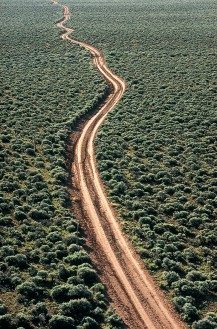
I grew up in a land cloaked in verdure, where time and the elements have long since softened every bold edge, so the desert’s nakedness will always turn my head. Even now, after living here a quarter century, when I fly through this land laid bare by climate and natural processes, my low aerial immersion in its relentless exposure can soon overwhelm my senses. But it also can activate deep impulses.
When I moved from the Cumberland Valley of Pennsylvania to the high desert of the Colorado Plateau, I was ripe for a new relationship with the land. In truth, that is why I came here. I had two tools at hand for meeting the challenge: flying and photography. The flying was occupational; I had chosen the life of a professional pilot because I wanted to be in the sky more than anything else, and routinely. The photography was for love–love of seeing and love of images. I learned it on my own, by doing it, and that makes its rewards all the sweeter.
Together, these skills brought me into an encounter with a land unlike anything my early life had prepared me for: the closest examination through a magnifying glass all the way up to the omniscient earthward gaze of satellites reveal countless stories encrypted in the surface of the desert. My low aerial explorations energized my latent passion for deciphering and interpreting these stories, and proved to be a perfect middle ground between the magnifying glass and the satellite.
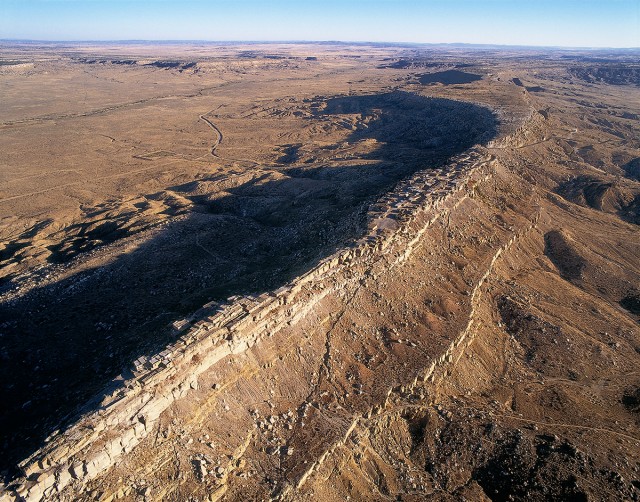
Going on a flight, whether as pilot or as passenger, is a time for temporarily leaving behind pedestrian concerns and contemplating context. Even in a purely physical sense, flying is transcendence. And if one is inclined to go beyond the utilitarian, then to go aloft is truly to enter a world of wonder. I will admit this without apology: I am drawn to wonder. It is the engine of my enterprise.
To the extent that we seek transcendence–by lifestyle choices for personal longevity, by having children, by considering seventh-generation sustainability—we also confront the brevity and triviality of our own individual existence. This is not necessarily an undesirable encounter. When we feel rejuvenated after time spent say, hiking a canyon, surely one element of our renewal is the full contact with natural systems that contain, support, and ultimately minimize the importance of our lives.
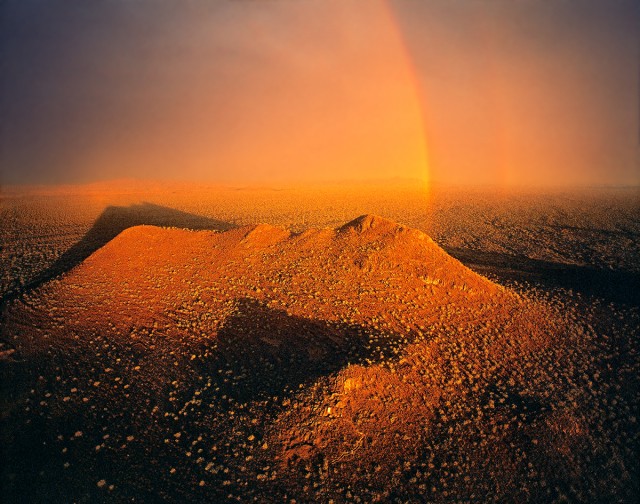
I have two reliable triggers of this at once humbling and validating experience: geology and archaeology. Geology has this effect because it is an encounter with deep time and planetary scale. There is nothing quite like the bracing gusts of sobriety that hit when we begin to glimpse our place in the scheme of things.
Archaeology does this, too, but on a much more human scale. If we were able to do a quantitative analysis of the pensive silence that descends on most non-native lay people who visit a Chacoan great house, for example, the most common train of thought might be: So many people must have lived here in its heyday, and yet they’re gone. How old is this building? A thousand years? Will anyone a thousand years from now even know that I existed, let alone know anything about who I was? I photograph archaeological sites from the air because both the experience and the resulting images bring torrents of thoughts like these, and more.
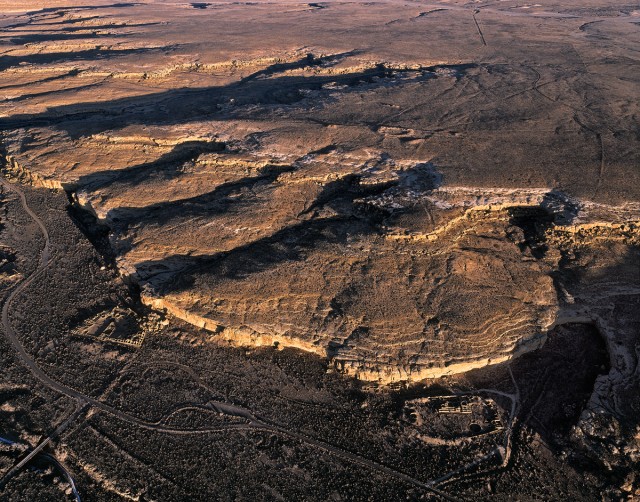
Coming from the sky to a place of ancient human endeavor, finding it situated in the larger landscape, bearing relationship to a broad array of landforms, landmarks, and resources–this experience touches me profoundly, as though I am meeting not only the individual, but also the extended family, clan, and tribe. As a pilot who flies every day from one contemporary community to another, crossing over countless others in between, I am only too familiar with the face of our civilization on the landscape. To know where the old places are, what they look like, and a measure of what scientific and ethnographic investigation has revealed about them, reins in the primacy of our own presence and adds precious depth to our understanding of place.
Obviously, the landscape as we know it won’t last forever, nor will archaeological ruins, nor will these images I create, nor will we. Our time scales are vastly different, but our ultimate fate is the same. Yet, if we continue to pry open the seals of our inherent ignorance with the tools native to our evolving brains, we find ever-growing webs of connection among all three. To fly, to photograph, and to share is my way of animating the webs with wonder and coming to terms with a naked land, laden with stories.
If you are in the Tucson area in 2014, I hope that you will be able to visit From Above: Images of a Storied Land at the Arizona State Museum. Archaeology Southwest, the Albuquerque Museum, and I created this traveling exhibition of sixty large-format aerial photographs and commentary several years ago. It is always humbling and pleasing to see these old friends unpacked and ready to speak—I hope that they engage your own sense of wonder and deepen your understanding of time and place.
From Above will be on exhibit at the Arizona State Museum from February 8, 2014, through September 20, 2014. Visit Adriel’s website here.
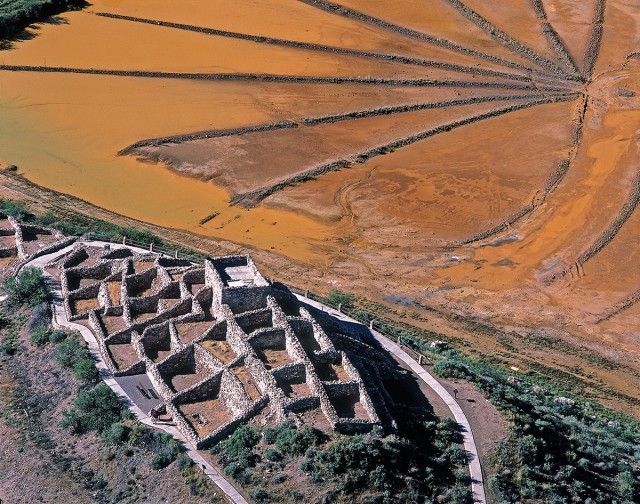
6 thoughts on “From Above: Images of a Storied Land”
Comments are closed.
Explore the News
-
Join Today
Keep up with the latest discoveries in southwestern archaeology. Join today, and receive Archaeology Southwest Magazine, among other member benefits.
Breath-taking shots. Thanks!
Magnificent photographs. Mr Heisey obviously has inimitable feelings for qualities of light and subject matter. One jarring note: the juxtaposition of the Sinagua village and the tailing pond- so emblematic of history vs ‘progress’ throughout the Southwest.
Amazing writing, amazing images, amazing person.
Hello Adriel, I think your pictures are amazing. I think it is also amazing of the time period we are living in. If we were living only a hundred years ago, our life would be so different. We moved in 2004 to about a mile north of Blosserville, near the north mountain. I had one flying lesson from The Harrisburg Jet Center in maybe 2006. After we took off, my instructor wondered if I wanted to fly to my house so I said okay. Since we live maybe 2 miles or so east of Flat Rock, that spot in the mountain was the first thing I looked for and I soon found it. He showed me what to do to fly the plane and it wasn’t long till I knew we had to be close and he took over the controls so I could look for our house. When I found it, he flew two complete circles around the house. Sharon was inside but she didn’t have a clue that we were flying around the house. I would love to learn to fly some day. It would be fun to visit you sometime. In 1997, we visited Tulsa, OK. I would love to see more of the west. Maynard Hock
The shots are great, and I enjoyed the narrative as well.
Up to your incredible old tricks. Would love to be back in touch. I’m at Apache Patch until April.
Hugs to Holly,
Sal